Peregrines are everywhere, or so it seems if you’re out birding with me. My brain locks on to them immediately no matter where I am. It’s second nature.
Last weekend Chuck, Joan and I went to a restaurant called Our Deck Down Under in Port Orange, Florida. The deck overlooks the Halifax River under a bridge spanning the intracoastal waterway. It’s a great place to see American oystercatchers, night-herons and the birds that roost on Pelican Island. As we sat down to eat Chuck mentioned a peregrine falcon was reported in the vicinity, but we saw no sign of him.
It was late afternoon and the brown pelicans, great egrets and white ibises were performing their evening ritual, arriving from the feeding areas, loafing on the shoals, flying to roost on Pelican Island. Black-crowned and yellow-crowned night-herons perched on the eastern shore waiting for night to fall. A few red-breasted mergansers fished near the islands. The gulls wheeled overhead.
We chatted over our beer and watched the birds. Suddenly all the gulls left in a rush. On the sand of the nearest shoal I saw the arc of a dying wing. Standing on that dying bird was a peregrine falcon. He had struck!
Too bad we missed the hunt. The falcon must have flown fast and low over the water, then pounced on a stationary ring-billed gull. What a different hunting technique this is from what I see at home! Our peregrines stoop from above or chase prey in the air. This unbanded bird, probably a coastal or tundra peregrine, hunted low and killed prey on the ground. Surprise was his best weapon.
Chuck ran to get his camera. When he returned, the peregrine looked nervous while Chuck took his picture even though he was more than 200 feet away and across the water.
The falcon evaluated the situation. The next island was 150 feet away and his prey was heavy. Could he make it? He decided yes. Picking up the gull in his talons he flapped hard, barely keeping the gull above the water, and landed safely on the next island. Watch the slideshow above of this amazing feat.
Safely on the next island the peregrine plucked and ate the gull. Soon the other birds returned, knowing that a peregrine with prey won’t need to hunt again until he’s hungry. Considering the size of this kill they’ll be safe for at least two days.
(photos by Chuck Tague)
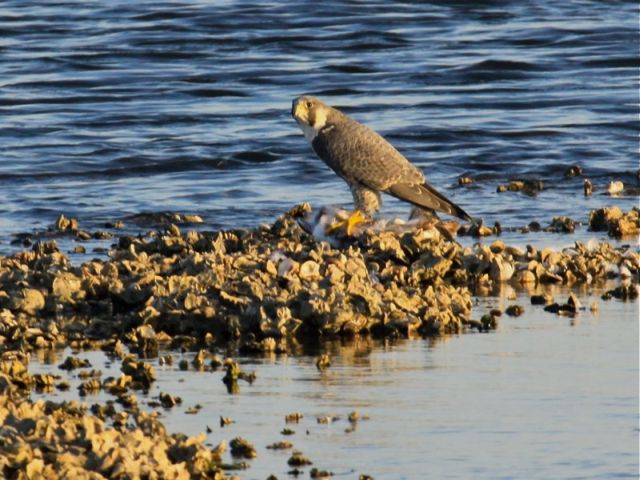
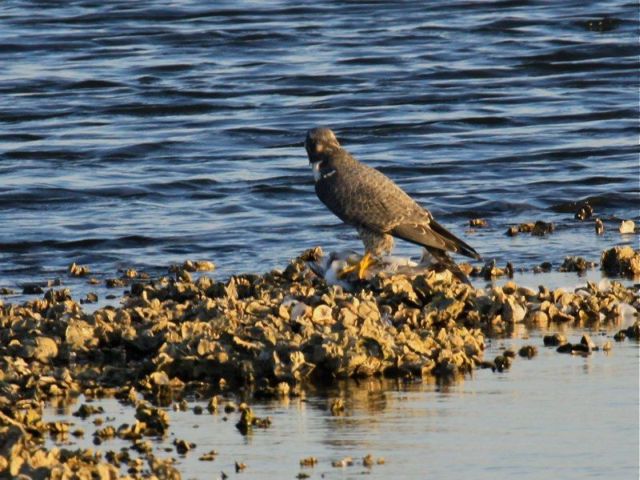
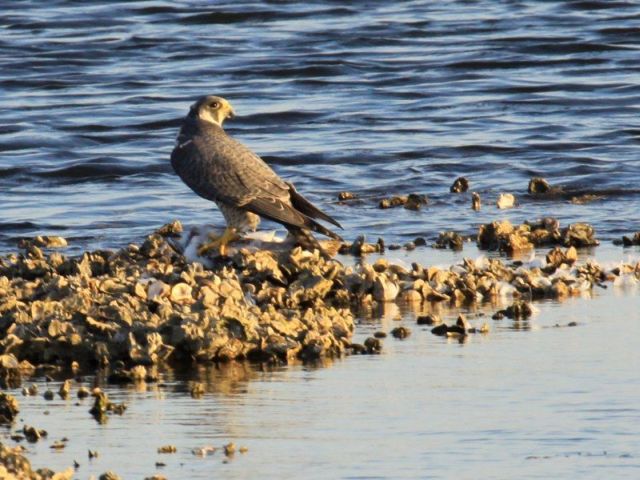
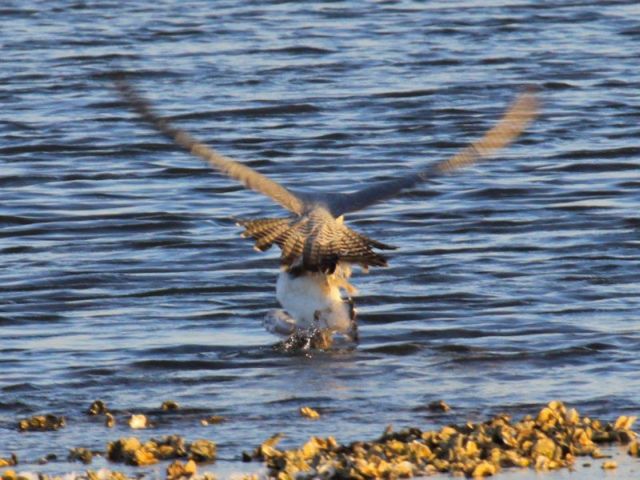
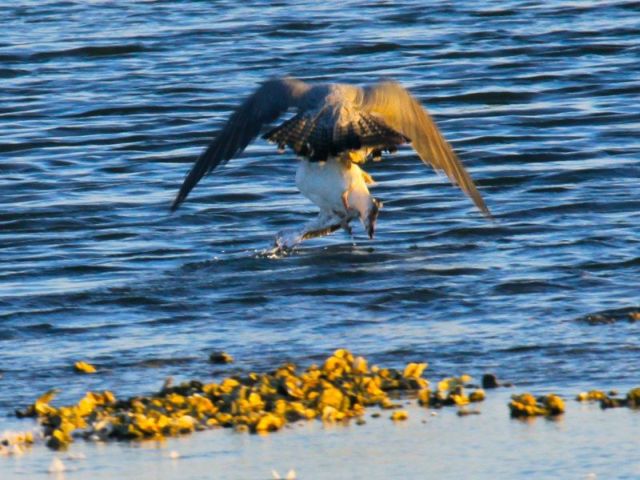
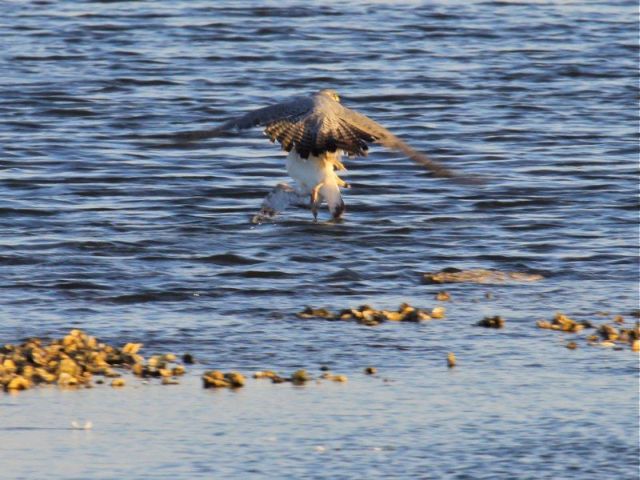
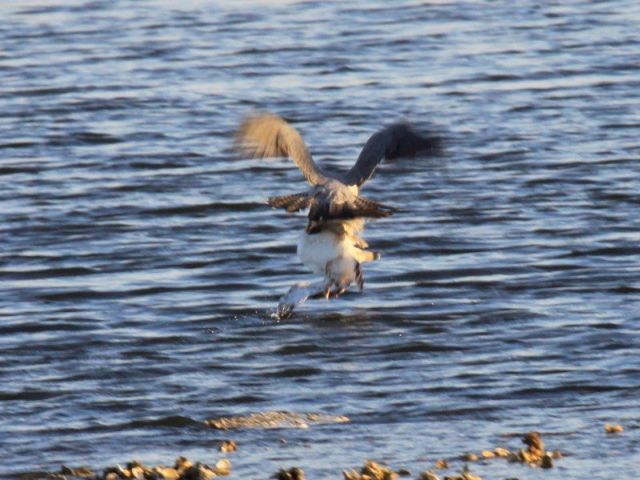
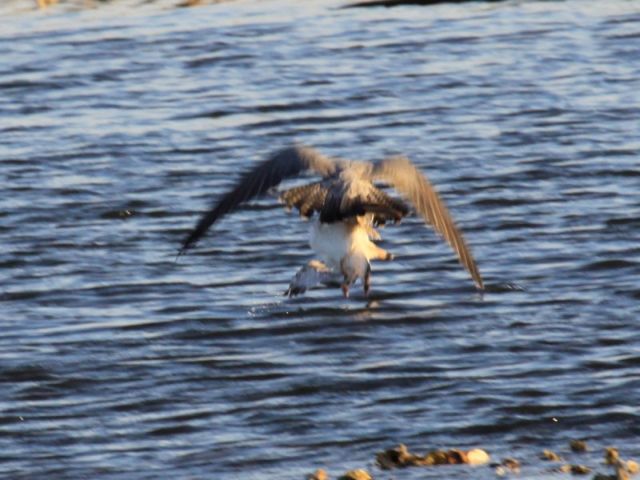
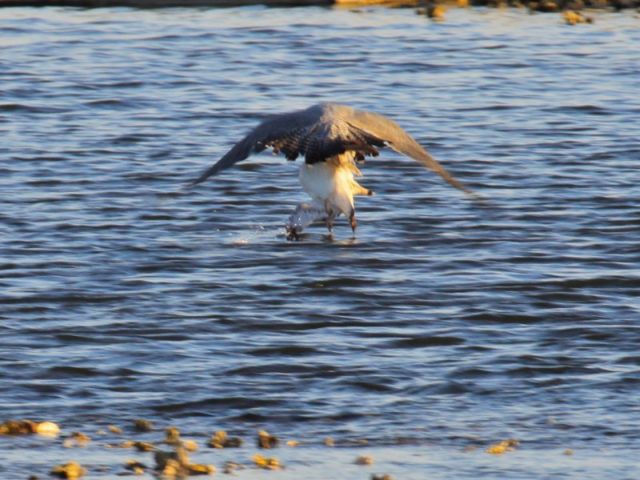
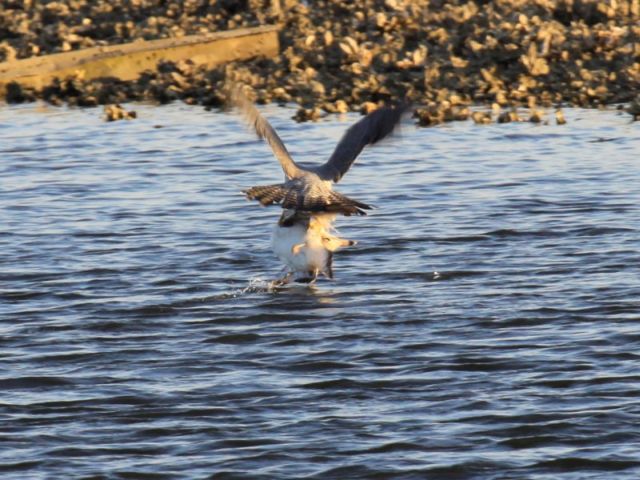
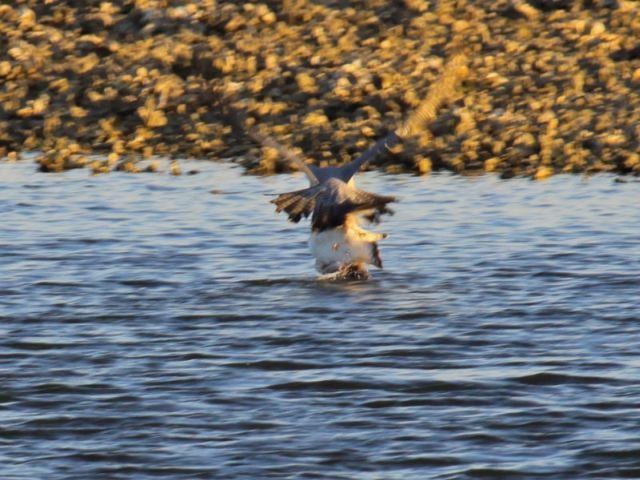
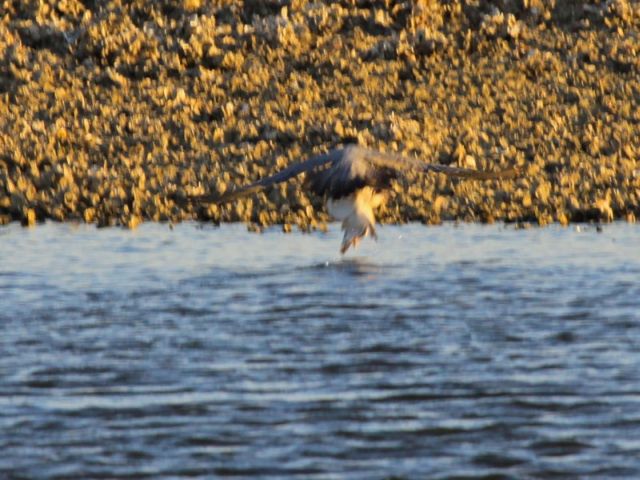
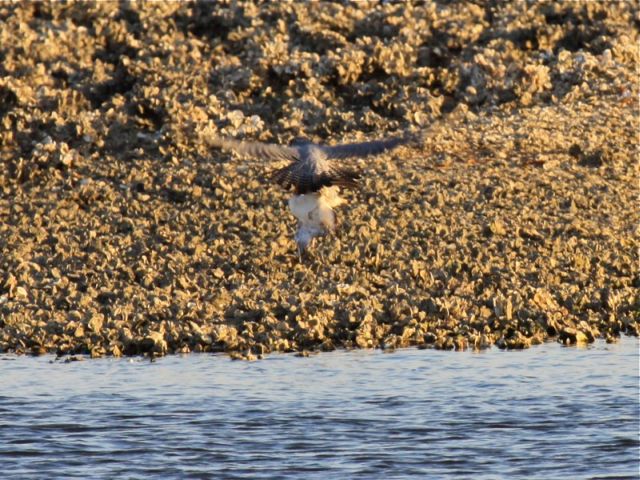
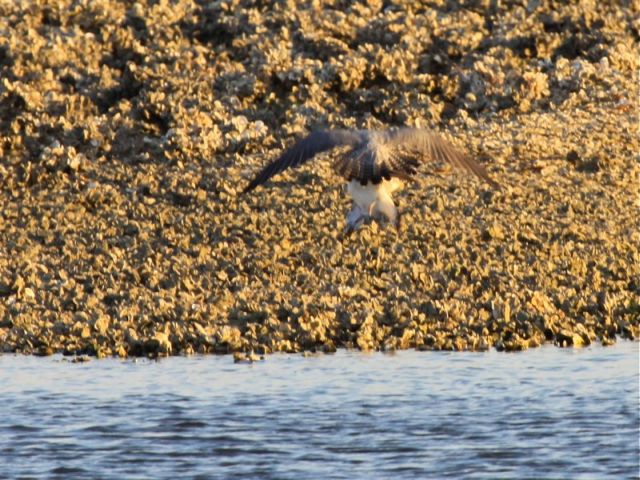
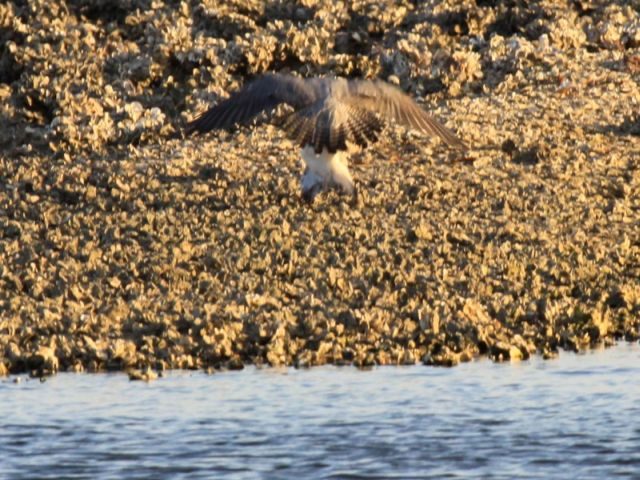
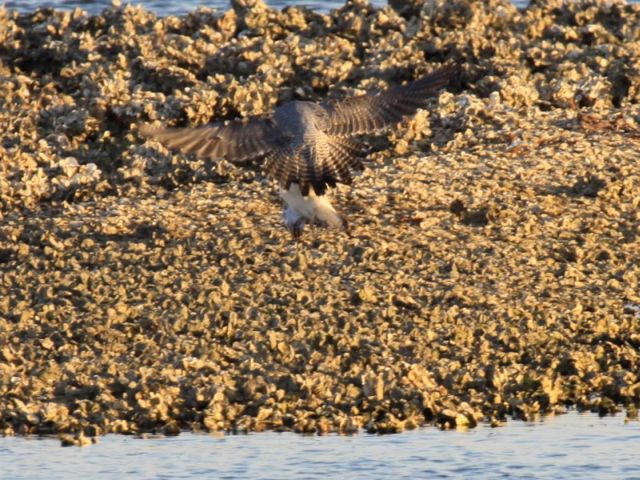
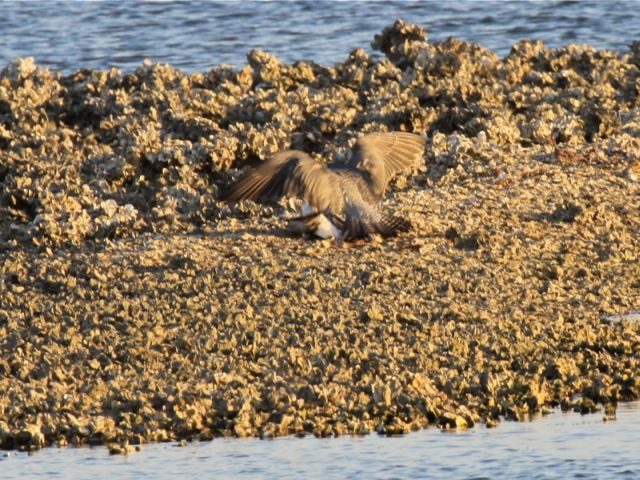
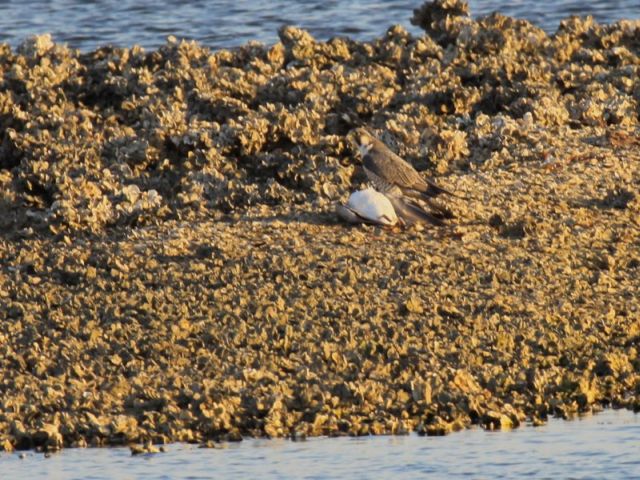
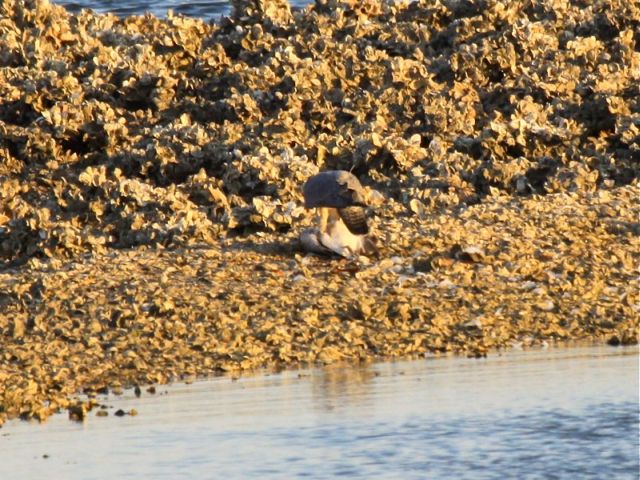
The slideshow was wonderful!!!
After 9/11, I look up towards the sky more often for planes out of fear. But on Sunday, pulling into HomeDepot’s parking lot, I looked up and saw a large bird circling and I wondered if it was a hawk looking for prey. Then I realized, your birdblog has replaced my fear of whats in the sky over my head to a “wonder” what kind of bird that is. Keep up the good BLOG!!
I also loved the slideshow. Are the coastal or tundra peregines different species, or does this nomenclature refer to their habitats? What’s new with E2 and Dorothy?
There is a subspecies of peregrine referred to as the “tundra” peregrine (in Latin: falco peregrinus tundrius). See more info on peregrine subspecies here:
http://en.wikipedia.org/wiki/Peregrine_Falcon#Subspecies